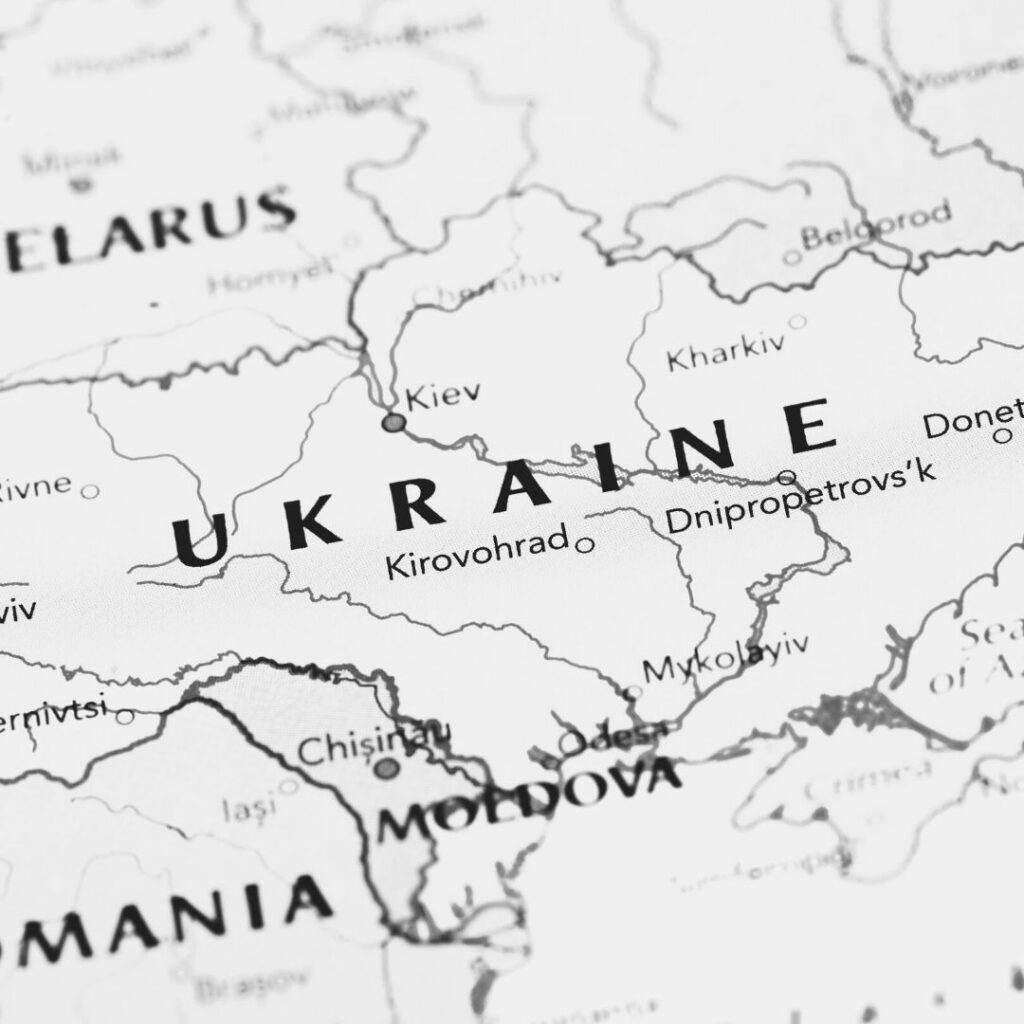Russian aggression toward Ukraine and the United States’ response are dominating the news at the moment. Because this issue is top-of-mind, and a potential conflict is very worrisome, it’s important for military families to understand what the heck is actually going on. We give a brief overview of the current situation with Russia and Ukraine, why the U.S. is involved, and potential U.S. and international responses.
SFI Biweekly Briefing on Russia and Ukraine
We talk through the most pressing questions about Russia and Ukraine. Watch or listen to catch up on what’s going on.
What is happening in Ukraine and why is it dominating the news now?
Over the last couple weeks, Russia has been sending military troops to the Russian border with Ukraine. Like, 100,000 troops! And it looks as though they might be preparing to invade Ukraine; at very least, their actions do not look normal or peaceful.
Now, Russian officials keep making public statements that they won’t invade Ukraine. But at the same time, Russia has started sending the U.S. and our European alliance (NATO) demands. For example, Russia wants us to promise that we won’t let Ukraine join NATO. They also want us to take away U.S. and NATO military troops that are stationed in countries near Russia, like Poland. The big problem is that both of those demands are total non-starters for the U.S. and NATO, who have repeatedly promised we would never do those things. So when they’re making demands that aren’t super realistic, and they’re taking aggressive actions at the same time, it’s hard not to take that as Russia making threats.
Plus, most of us probably still remember 2014, when Russia invaded and annexed the Crimean region of Ukraine. So there’s already precedent for them taking this kind of invasive action, which is why we’re all taking it very seriously, and why it’s such a big news item right now.
Why is the United States involved? Why should we care?
First of all, the U.S. is part of the NATO alliance that is getting taunted by Russia right now, so whether or not we want to be involved, the United States kind of has to engage in that part of the situation (at least for now).
Beyond that, anyone who wants peace in the world should be concerned and engaged when a country threatens to violate another country’s sovereignty with an invasion. That kind of action could really destabilize the whole world order.
Now the deeper question is what (if anything) the U.S. should do if Russia takes the next step and actually invades Ukraine. And that’s kind of an open question. The White House has stated that the U.S. will not send military troops into Ukraine. Which is good – this situation is not a direct security threat to our homefront, and military families like us don’t want our loved ones sent into harm’s way if it’s avoidable. But there are plenty of other things the U.S. can do instead.
What is the United States considering to prevent Russian aggression? How do we avoid military intervention?
Let’s review what the U.S. is doing now, and then what we could do next.
Right now, the U.S. and our NATO allies are engaged in a super involved level of diplomacy with Russia. Our Secretary of State Blinken has held several meetings with his Russian counterpart, as well as with EU officials. NATO is unified in wanting to negotiate a peaceful resolution to this situation. It’s worth nothing that, unfortunately, because things are so volatile, U.S. diplomats have been asked to evacuate the Ukraine embassy for now. But high-level diplomats are still working the problem.
The actions the U.S. might take next are 1) economic and 2) military-adjacent. First, the U.S. is considering economic sanctions. These would be way more drastic than previous Russian sanctions, and they would still carry their own risks. The U.S. might also encourage European countries like Germany to reduce their consumption of Russian natural gas, in order to reduce one of Russia’s cash flows. Those are the economic options.
Second, the Pentagon is preparing to surge U.S. military troops, not to Ukraine directly, but to nearby countries where we have bases (like Poland). Approximately 8,500 troops are currently on “heightened alert” for movement. NATO has also pledged to send Ukraine additional weapons and military resources so that they could defend themselves.
The hardest question to answer is what’s going to happen. Because it’s hard to understand what Russia’s President Putin really wants: is he serious about invading Ukraine because he wants to gain more territory? Is his end goal just to destabilize Ukraine, in which case invasion is one of multiple options? Or is he simply trying to extract concessions from the U.S. and NATO, in which case the invasion stuff can be negotiated away? We ultimately don’t know yet, so it’s difficult to predict likely outcomes.
But it’s important for our community to monitor the situation, because if this situation escalates, this could plunge U.S. military families into another dangerous situation abroad, and obviously that is a worst-case scenario for our community.
Recommended Resources
Here are some resources we recommend to help understand Russia’s threats to Ukraine and potential outcomes.
- SFI Statement on US Deployments Near Ukraine
- Live updates with latest developments, NY Times
- Is Russia preparing to invade Ukraine?, BBC News
- Ukrainian Security, Black Diplomats
- How a bank messaging system could decimate Russia, NPR
- Global News Podcast, BBC News


